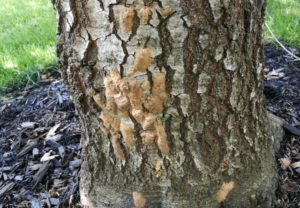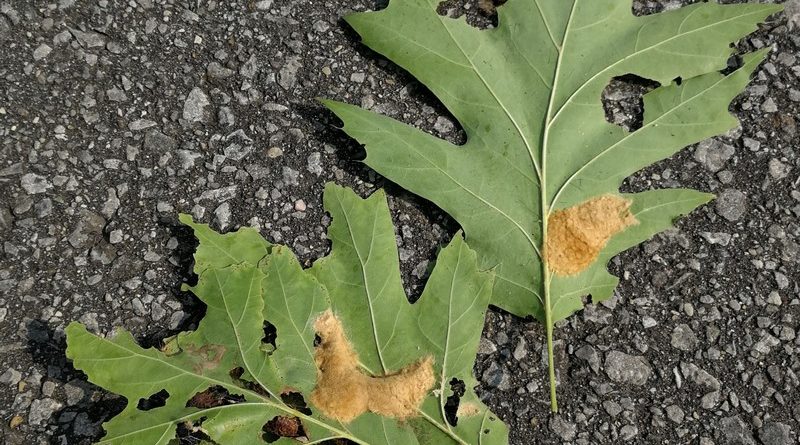Controlling European gypsy moths on our trees
Marilyn Whitaker
In June people were noticing that the leaves of some trees appeared lacy, and some trees lost all of their leaves. While healthy deciduous trees can produce more leaves in the summer and survive, annual attacks can cause the trees to lose vigor, become vulnerable to other pests and diseases, and die. The culprits were European gypsy moths Lymantria dispar dispar (LDD moth).
First seen in Ontario in 1969, they have spread to many parts of southern Ontario and are appearing in parts of Ottawa. While LDD caterpillars prefer oak leaves, they will eat the leaves of other deciduous trees such as maples, aspens, fruit trees, as well as coniferous trees, and many other plants.
These insects are now established in Toronto which has led to the City of Toronto setting up a LDD Moth Treatment Program and posting some information and videos for people wanting to help control LDD moths and protect trees (see www.toronto.ca/threats-to-trees-insects/european-gypsy-moth). Recently, the City of Ottawa posted information about what it is doing and what residents can do about gypsy moths (Google, Ottawa.ca – gypsy moths).

Photo Marilyn Whitaker
Knowing the LDD’s life cycle is important for combating them. For example, by July/August, the caterpillars have completed their feeding, entered the pupae stage and are emerging as adult moths. This summer, some people were able to set up pheromone traps near affected trees in order to attract male moths and interfere with mating. Now until spring, removing egg masses is important. Egg masses are fuzzy, tan to beige flattened blobs about 2 to 2.5 cm wide (3/4 inch) and can be on tree trunks, branches, and leaves, plus lawn furniture, building crevices and walls. They should be gently scraped or brushed away into a solution of soapy water, then covered for 48 hours to kill them before disposal (see above websites for details and other suggestions). Check trees after their leaves have fallen. When asked about egg masses on deciduous leaves, Ottawa forestry officials said to rake and bag the leaves for pick up and removal to the municipal waste depot where they can be safely destroyed. Do not add them to your compost or mulch these leaves around your property.
2021 marked the start of dealing with a new invasive species to Ottawa which could devastate trees if left unchecked. There are some natural predators such as some birds as well as some bacteria and viruses which are natural controls which could help reduce the LDD population and destruction. Nevertheless, people will need to be vigilant and start taking measures to keep LDD moths in check and protect our trees.

Photo Marilyn Whitaker
